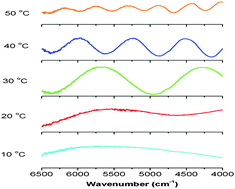Effect of temperature on the build-up and post hydrothermal processing of hydrogen-bonded PVPON/PAA film†
Abstract
Hydrogen-bonded films were prepared by layer-by-layer (

* Corresponding authors
a
State Key Laboratory for Modification of Chemical Fibers and Polymer Materials & College of Material Science and Engineering, Donghua University, Shanghai, China
E-mail:
shgyang@dhu.edu.cn, jxu@iccas.ac.cn
b Laboratory of Polymer Physics and Chemistry, Institute of Chemistry, Chinese Academy of Sciences, Beijing, China
Hydrogen-bonded films were prepared by layer-by-layer (

 Please wait while we load your content...
Something went wrong. Try again?
Please wait while we load your content...
Something went wrong. Try again?
J. Ma, S. Yang, Y. Li, X. Xu and J. Xu, Soft Matter, 2011, 7, 9435 DOI: 10.1039/C1SM05587A
To request permission to reproduce material from this article, please go to the Copyright Clearance Center request page.
If you are an author contributing to an RSC publication, you do not need to request permission provided correct acknowledgement is given.
If you are the author of this article, you do not need to request permission to reproduce figures and diagrams provided correct acknowledgement is given. If you want to reproduce the whole article in a third-party publication (excluding your thesis/dissertation for which permission is not required) please go to the Copyright Clearance Center request page.
Read more about how to correctly acknowledge RSC content.
 Fetching data from CrossRef.
Fetching data from CrossRef.
This may take some time to load.
Loading related content
